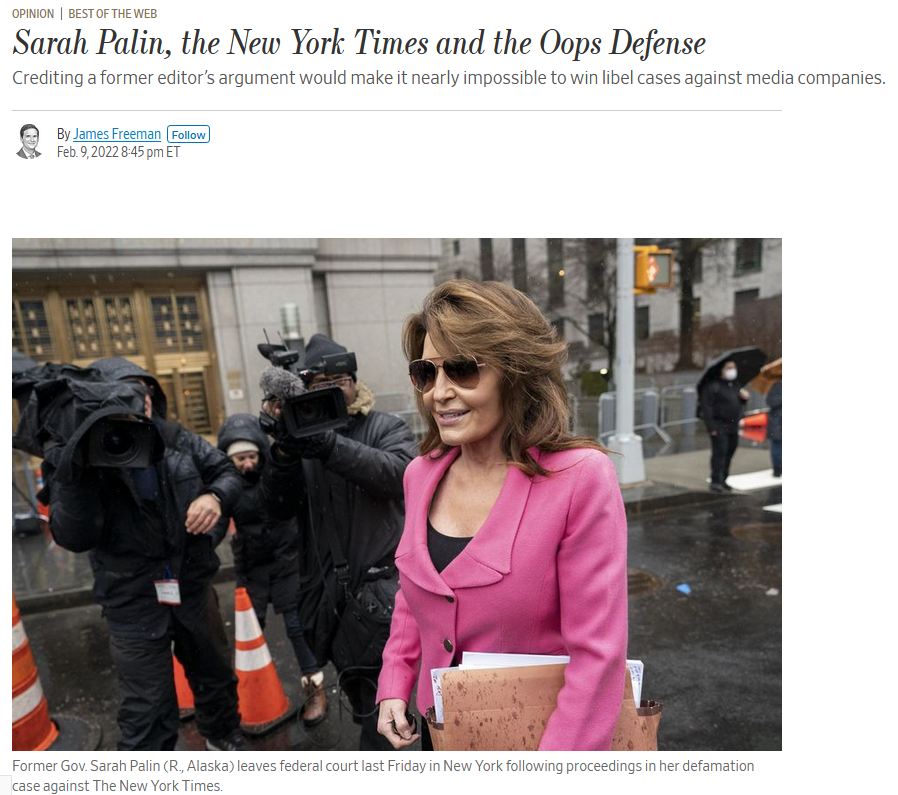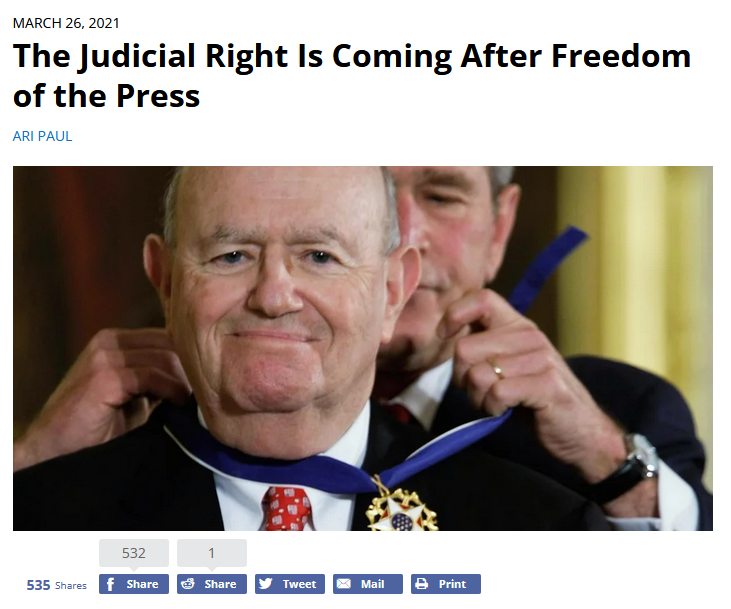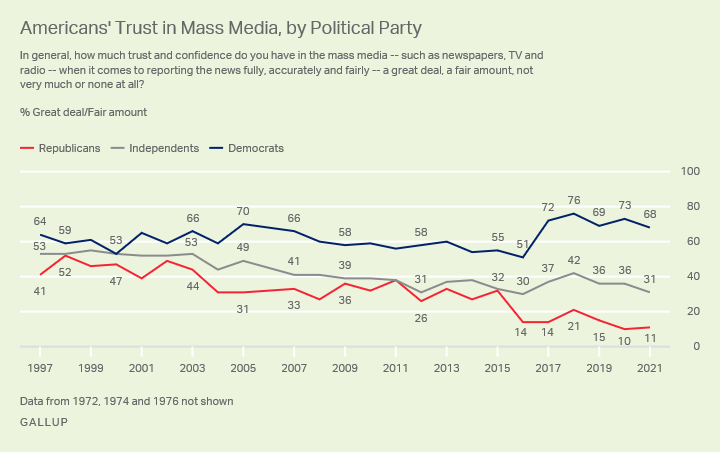Janine Jackson interviewed IPS’s Khury Petersen-Smith about economic sanctions for the March 11, 2022, episode of CounterSpin. This is a lightly edited transcript.

Atlantic (3/5/22)
Janine Jackson: “The Russian Elite Can’t Stand the Sanctions,” crowed a recent piece in the Atlantic. The “whine and protest” from the country’s oligarchs meant that the US and European sanctions were “working as intended, to punish Russia’s elites for supporting President Vladimir Putin.” They “won’t starve,” the story elaborated, but they “will be unable to maintain their jetsetting luxury lifestyle.”
Meanwhile, CNBC viewers were told, “The West is trying to destroy Russia’s economy. And analysts think it could succeed.” That piece cited the French finance minister’s statement that the aim of the latest round of sanctions was “to cause the collapse of the Russian economy.”
So which is it? Inconvenience a few Richie Riches, or bring a country of 145 million people to its knees? Or is there a secret way to immiserate a country without incurring grievous human harm?
The current moment provides another chance to examine the role of economic sanctions in conflict. And here to help us think about that is Khury Petersen-Smith. He’s the Michael Ratner Middle East Fellow at the Institute for Policy Studies. He joins us now by phone from Boston. Welcome back to CounterSpin, Khury Petersen-Smith.
Khury Petersen-Smith: I’m so grateful to be here, Janine.
JJ: Well, thank you.

Truthout (3/6/22)
Just like we are told by politicians and by media that weapons like bombs and drones are surgical, and that they’re targeted, we’re also told that sanctions are carefully aimed to hurt only the powerful, in order to influence them. Your recent writing engages that storyline, because it just doesn’t play out that way, does it?
KP: It doesn’t. And I think that, particularly with sanctions, they’re not designed to play out that way. You know, when the Biden administration first was talking about doing sanctions on Russia, they simultaneously talked about targeting Putin and a few oligarchs, and they would use phrases like, to use their language, “crippling sanctions.” And, as you said, you can’t have it both ways. You can’t say that this is targeted and specific, and also talk about attacking the entire Russian economy, which the kind of sanctions that they have pursued intend to take out an economy. When you cut the Russian economy out of the international banking system, for example, that’s not just going to affect the billionaires, that’s going to affect the whole population. And as we’ve seen, the ruble has been crashing. So that does affect the population. So this is the design. It’s how sanctions are intended.
JJ: And that’s the heart of your piece, is the fact that sanctions are framed for the public, the people who are going to be asked to support a particular invasion or a particular policy—sanctions are framed as an alternative to war. And I hear you saying, that’s not just imprecise, that’s a wrong way to think about it.

Khury Petersen-Smith: “The first thing is that sanctions, their impact is devastating in ways that are at least similar and often worse than armed combat.”
KP: Yeah, that’s absolutely right. The first thing is that sanctions, their impact is devastating in ways that are at least similar and often worse than armed combat. We think about the sanctions that the US imposed on Iraq in the 1990s. When we think about the decades long US embargo on Cuba, these have had drastic impacts on the populations. When we think about the way that the Iranian population has been impacted right now, and has been for years.
The other thing, though, is that often and actually, in the three cases I just named—Iran, Iraq and Cuba—the US government deploying sanctions is not posing them as an alternative to military action. It actually combines them with military action. So we know that the US embargoing Cuba has coincided with various attempts to overthrow the Cuban government since the Cuban Revolution. The sanctions on Iraq in the 1990s were bookended by US invasions, in 1991 and 2003. And then with Iran, the sanctions that have been imposed for several years, coincide with all kinds of military pressure as well.
And Trump was maybe the most honest about this. Folks will remember his “maximum pressure” regime, which was a combination of intense sanctions and parking aircraft carriers off the coast of Iran, threatening airstrikes and so on. So the actual practice is to really combine sanctions and combat or armed force. They’re really just tools in the same toolbox.
JJ: When folks are transparent about it, they will say that sanctions are aimed at regime change. And what I often talk about is, accepting the US legitimacy in changing the leadership of other countries is the price of admission to serious people conversation about geopolitics and news media. You don’t have to concede the right of global powers like the US to force regime change. But even beyond the illegitimacy of that goal, sanctions don’t appear to work toward that end.
KP: Right. Yeah, that’s exactly right. The first thing, what you said is so important, because it’s a pretty incredible thing that policymakers, US officials and journalists in mainstream media talk openly and casually about how the intended impact of sanctions is to immiserate a country’s population such that they overthrow the government in a way that is favorable to the United States. And if that isn’t shocking, then I ask people to consider what it would be like, or how the US government would react, if that kind of conversation was happening casually in Moscow, or in other countries that the US deems as enemies. It’s really incredible that US officials demonize Putin for being undemocratic, which certainly, he is undemocratic.
JJ: Absolutely.
KP: But to support overthrowing the government, and not just support it rhetorically, but pursue a policy whose thinly veiled objective is that—it’s a profoundly anti-democratic act.
But, as you say, as wrong as the intention is, it’s also been ineffective. I mean, the US has had sanctions on Cuba for how many decades? And that government remains in power.
If anything, sanctions tend to strengthen the government that the US is targeting. When the US imposed sanctions on Iraq, for example, again, with the hope that that would lead to a coup within Iraq against Saddam Hussein’s regime, because of the way that the Iraqi economy was devastated, and the resulting limited access to things like food and medicine, it made Iraqis more dependent on the Iraqi government, actually, and so it strengthened that government, for what it’s worth. So the US has no right, anyway, to meddle in the affairs of another country’s society, to target not only the country’s population, but the most vulnerable people in the population, who are always the people who lose when the US imposes sanctions. But also, for what it’s worth, it’s an ineffective approach.

Detroit Free Press (2/28/22—subscription required)
JJ: US media translate it into what they imagine as “news you can use” for their US audience. I saw an op-ed in the Detroit News by a former diplomat that said that the West needed to pull together to “change Putin’s path.” And that
that unity may well depend on the willingness of citizens of the West to suffer some economic costs of the broad economic sanctions. If inflation or gas prices go up and your 401(k) goes down as a result, give some thought to what democracy is worth to you.
There’s a lot going on there, obviously.
KP: There is.
JJ: I mean, that could take us all day. But let me just say, all right, let’s think about what democracy means to us. And also international solidarity and human rights and justice and sustainability and peace. Let’s think about those things. What could we be thinking about as other ways forward, in what is admittedly a frightening time?
KP: Right. Well, the way you’re putting things in an international context, I think that’s extremely important, because while US officials and US media cast countries that they deem as enemies as so foreign that you couldn’t possibly relate to them, that there’s something about Russia, or something about Iran, or something about China, there’s something about the kind of internal nature of those societies. When we talk about Iran, it’s these Islamophobic tropes, or something about “those people,” that democracy is a problem. And the only solution is for democracy to be imposed by the United States and the West.
And let’s remind ourselves that among the many things happening in this country, we had an armed attack on the Capitol last year, led by an outgoing president who refused to accept the election results. We have an open campaign by the Republican Party to pass laws to restrict democracy, democratic rights at the state level, targeting the people who are always targeted: Black people, other people of color, immigrants and so on.
And so there are plenty of problems in terms of democratic rights here. And the notion that there’s something exceptional about Russia that requires the US to step in and do something, whereas this is a bastion of democracy, is false. Instead, I think that we the people, the ordinary people of this place and of the world, need to ask, what are we all doing within and across borders to make a more democratic world?
I have to say, I’m quite inspired by the people in Russia dissenting against this war in their thousands in cities across the country. They are pointing the way in terms of democracy, not only in Russia, but actually they’re pointing the way for all of us. So what are we doing to build popular democracy, in other words?
And the challenge of having more democratic societies is not a Russian challenge. It’s not an Iranian challenge or a Chinese challenge. It’s also a US challenge, and it’s a challenge that we are facing all across the world. I think that it means a very different orientation that we have to have.
JJ: All right then, we’ll end there for now. We’ve been speaking with Khury Petersen-Smith. He’s the Michael Ratner Middle East Fellow at the Institute for Policy Studies. And his article, “Sanctions May Sound ‘Nonviolent,’ but They Quietly Hurt the Most Vulnerable,” can be found at Truthout.org. Khury Petersen-Smith, thank you so much for joining us this week on CounterSpin.
KP: Thank you. It’s an honor.
The post ‘The Most Vulnerable People Lose When the US Imposes Sanctions’ appeared first on FAIR.
This post was originally published on FAIR.











































































































